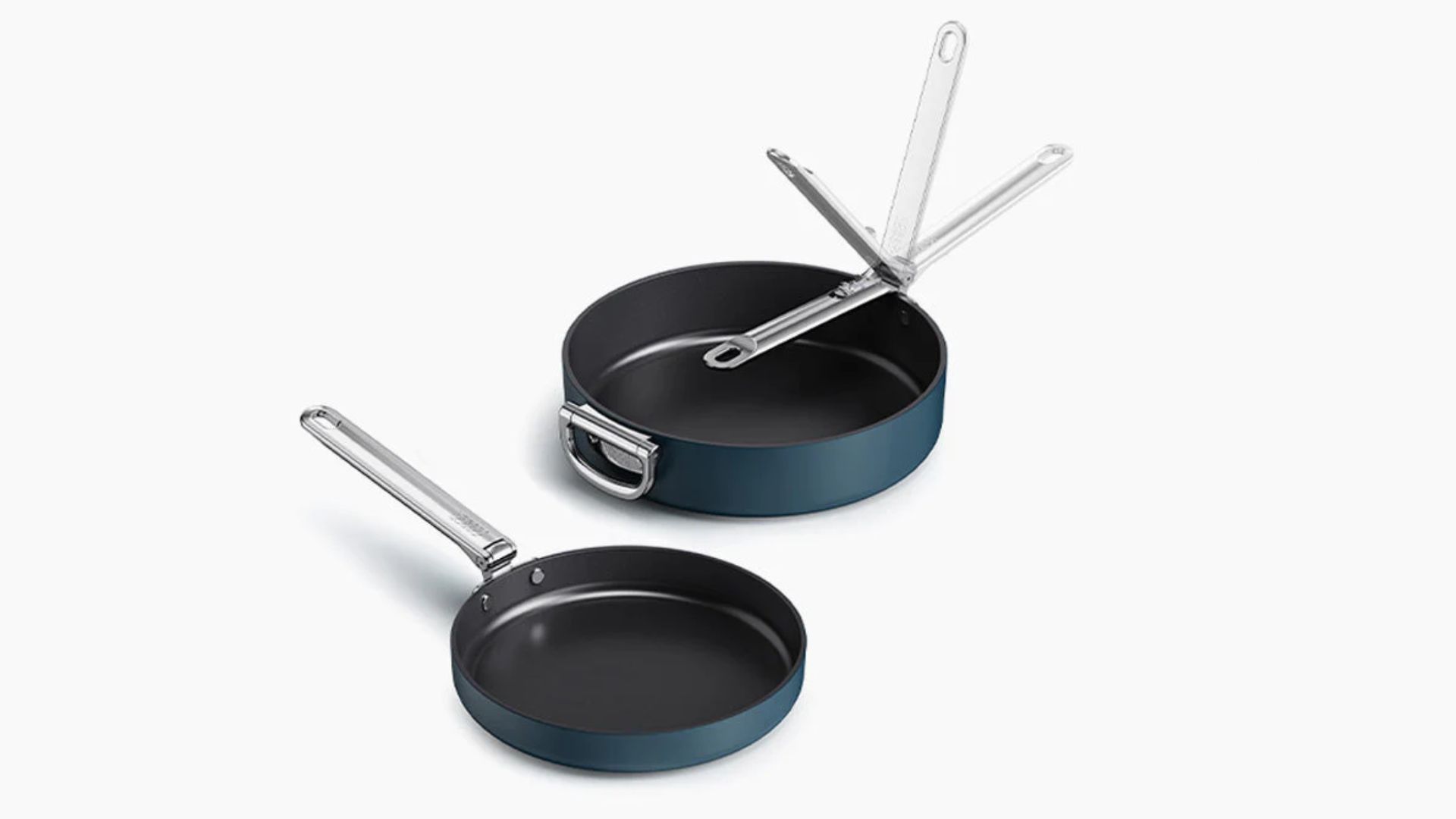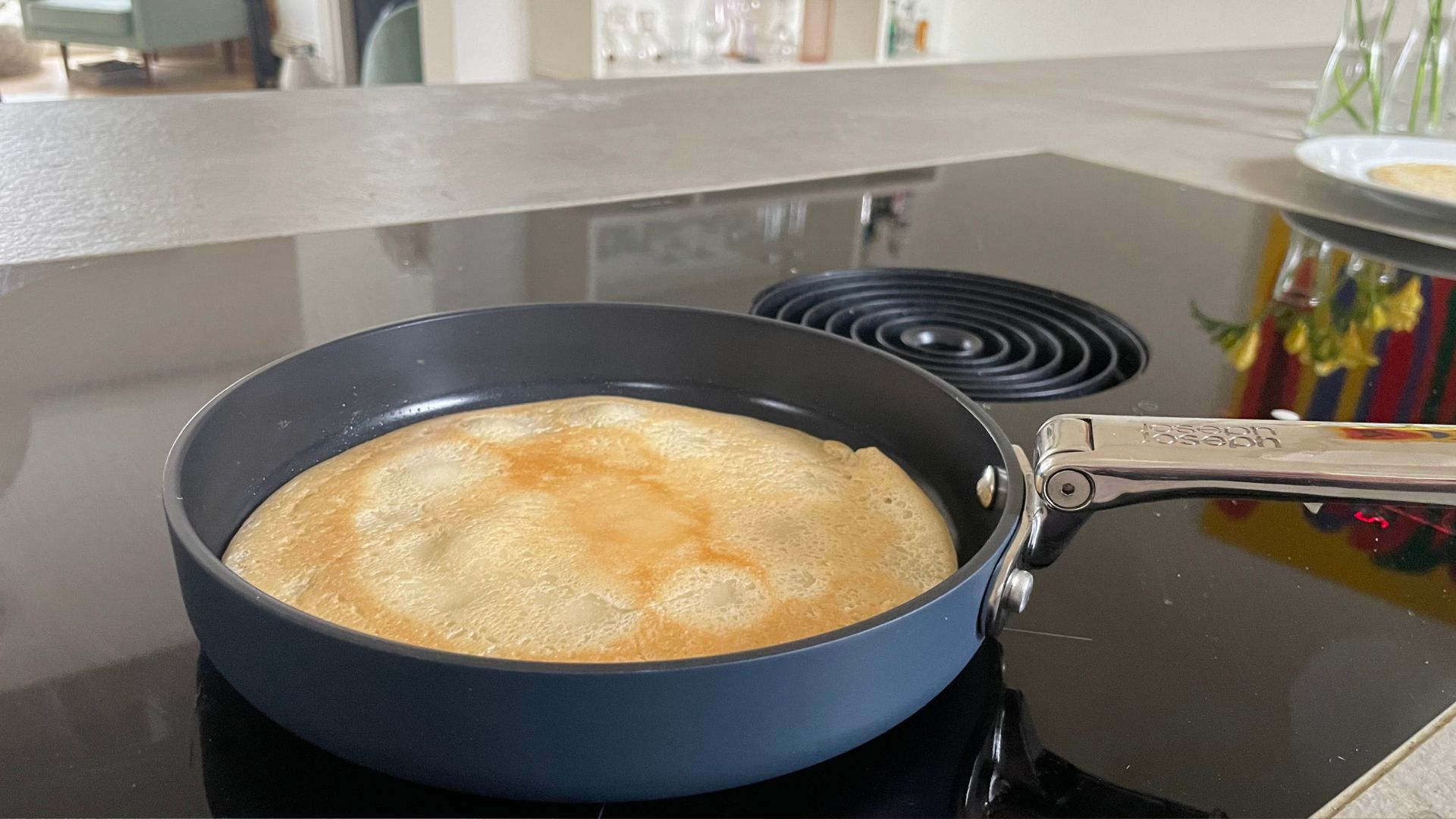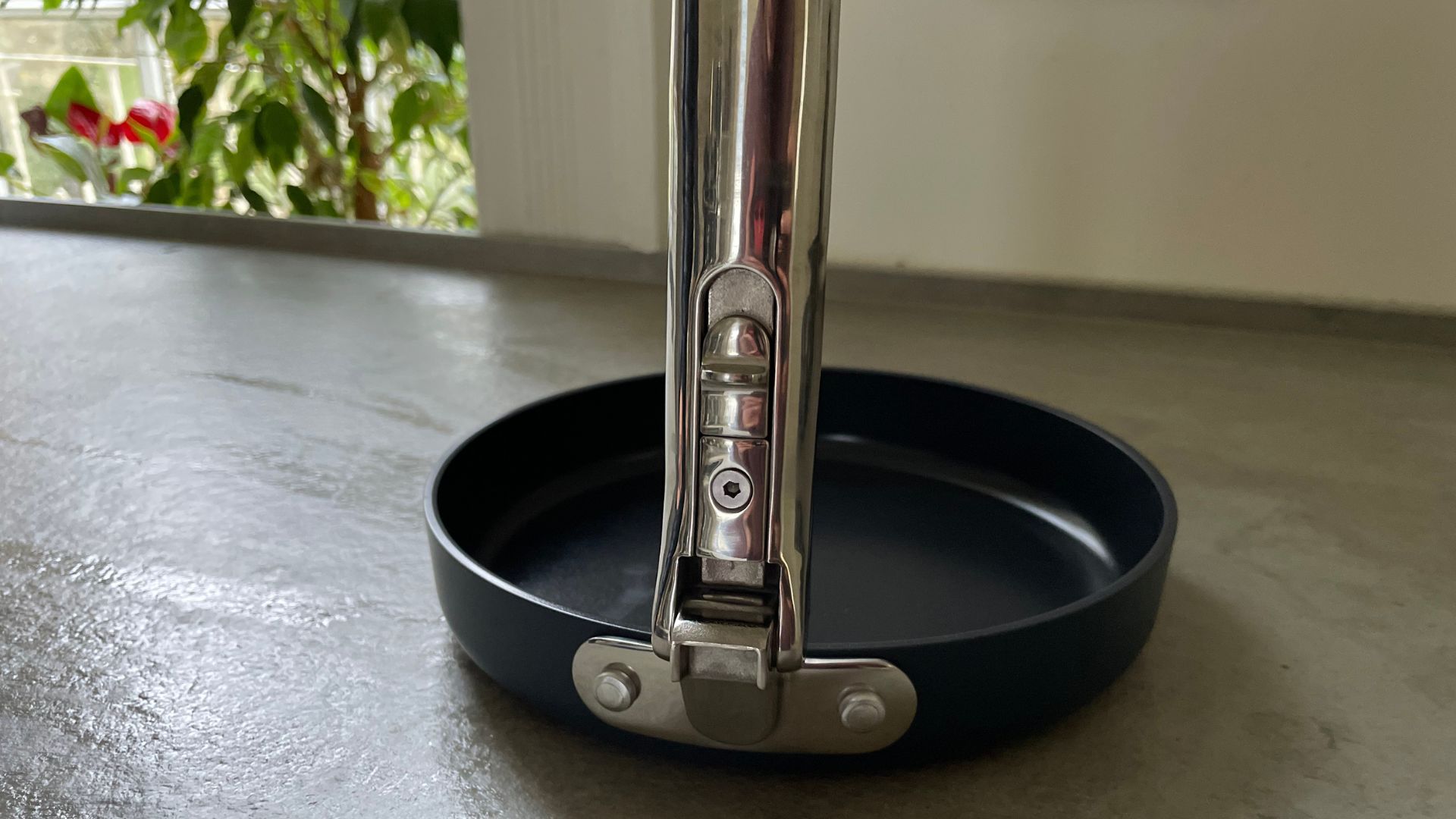
Joseph Joseph, for those in the know, is a metonym for ‘expertly designed. Time and time again, the brand reinvents everyday home accessories in innovative ways. On this occasion, they’ve turned their hand to frying pans.
The Joseph Joseph saucepan is one of the best induction pans on the market for a number of reasons: it comes with a foldable handle, making all storage dilemmas a thing of the past; it's coated with a non-stick (and non-toxic) ceramic lining; and it comes with a 20-year guarantee.
In a nutshell, Joseph Joseph has formulated a recipe for success. I’ve put it to the test alongside the best frying pans out there so that you can work out whether this is a good investment for you.
Specifications

Unboxing

This pan comes in a slim cardboard box. Thanks to the neat, foldable handle, it isn’t as long as other frying pan boxes and it also isn’t any deeper. This won't make a huge amount of difference to your life, aside from the fact that there won't be much that needs to be disposed of. The cardboard is all recyclable and the plastic-style sleeve that keeps this scratch-free is also recyclable, which is great to see.
I thought that the pan might feel a bit light and cheap, as some innovative designs do, but this has the weight and design of a really premium saucepan. The handle and edges comes with SwingLock™ technology. that will click and hold its position. I'd happily hold it and swing it around without worrying about the pan's integrity.
Who would it suit?

Anyone who’s owned anything Joseph Joseph will know what to expect from this pan. It’s really compact (perfect for small homes) and technically flawless. Joseph Joseph claims that this saves 50% of space in your cupboards and, short of doing all sorts of crazy calculations, I'd agree with the sentiment. You'll get all the room that a saucepan handle would normally demand back in your cupboards as well as a pan that's stackable. There's certainly something to be said for that.
Beyond the space-efficient design, there are some other practicalities that will appeal to plenty of people. The non-stick is ceramic, which is better for your health - and the environment than plastic, or chemical non-sticks. I put this to the extreme test and found that it is really effective. I left pancake batter on the pan for twenty minutes and, whilst it wasn’t edible, it hadn’t stuck on the pan, which is impressive.
You've also got the benefit of multiple compatibilities (this can sit on every hob type) as well as the fact that the heavy gauge body can sit inside ovens of up to 232ºC. The only reason not to get this is if you won't buy the set of Joseph Joseph pans, because then you won't get to enjoy maximum space efficiency. Aside from that, everything works in Joseph Joseph's favour.
What is it like to use?

Pans are rarely difficult to use, but when you add in removable, foldable handles you run the risk of some extra faff that might not pay off for the extras. The pan handle has a trademarked lock on the bottom that makes it feel as solid as any welded handles that I've tested. I'd even put money on this being as robust as the £1,000 Made In Set.
The Joseph Joseph Frying Pan has nice weight: there's enough to make this feel substantial without it tipping into a cast iron wrist ache. I could go on and on about the wonders of the Joseph Joseph, but I could also show you why this is one of the best induction pans you'll ever use with my two key tests.
Test 1: frying onions

The first test that I run is frying onions. Before I even start chopping, I do a warm-up test: I put the pan on the hob and set it to maximum heat and then I splash cold water in it. After just one minute, when I splashed the water over the pan, it sizzled and danced across the base, proof that the pan was hot enough to use. The fact that this hit that temperature in under 60 seconds is proof that this can conduct heat quickly and evenly. It's a great start. which is an impressive heat up time.
Once I knew that this could get hot, I thought I could start with the onion test. I chopped one large onion to put in the base of the pan. I think the Joseph Joseph could take at least two or three onions because you can see that there’s still a fair amount of space on the base of the pan.
The onions sizzled and started to turn clear at the edges within a few minutes. I actually got distracted (the postman arrived and my dog sprinted to meet him), so I left the onions on the hob. When I came back to the pan and realised my mistake, I grabbed my (wooden) spatula and moved the onions around. To my surprise, they hadn’t glued themselves to the base of the pan. Instead, the golden onions slid around on the base. This is an impressive testament to the ceramic non-stick's capabilities. As for the onions, they achieved a lovely crisp golden edge and a clear, tender bite. I couldn’t ask for more.
Test 2: making pancakes

The pancake test is always a good way to get a visual on the heat transfer across the pan. You can see in the image above that the colour across all the pancakes is really even. The non-stick made it easy to flip these, even the deep edges didn’t stop my pancakes from getting some great air time. I poured thicker American pancakes and thinner crepes, both of which were well-cooked through, nicely golden brown, with some lovely crispy edges and soft middles.
Cleaning

As you’ve heard, the non-stick is effective. Any food that may have got stuck on the bottom of the pan easily came up off the base, sliding into the bin or sink. Then, the rest of the pan was washed clean in warm soapy water. It dries easily and then packs neatly into the drawer. Of course, you only get the space-saving benefits if you invest in the whole set of Joseph Joseph pans, but this will at least give you a foldable handle that won’t get in the way.
Should you buy it?

If you’re short on space and conscious of non-sticks that could have potentially toxic contents, the Joseph Joseph pan will look like an attractive option. It might be more expensive than some, but the style and convenience more than warrants a splurge.
!["[T]he First and Fifth Amendments Require ICE to Provide Information About the Whereabouts of a Detained Person"](https://images.inkl.com/s3/publisher/cover/212/reason-cover.png?w=600)






